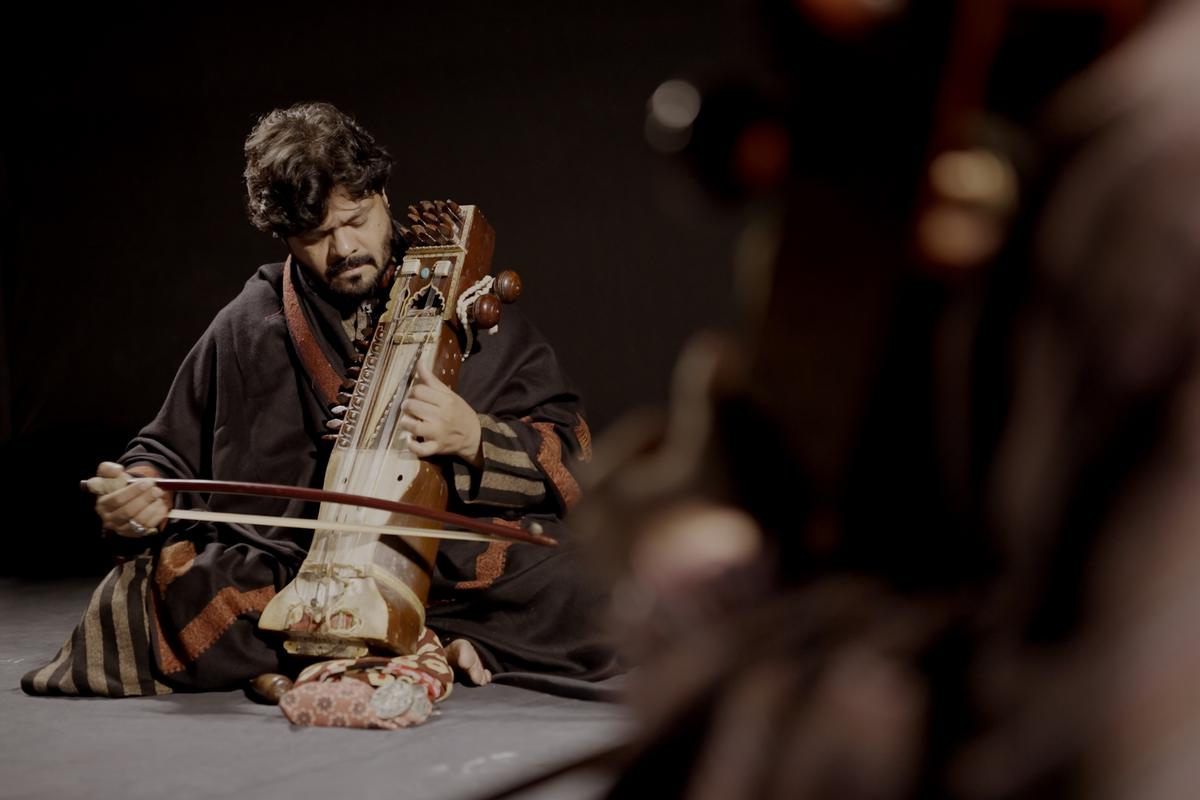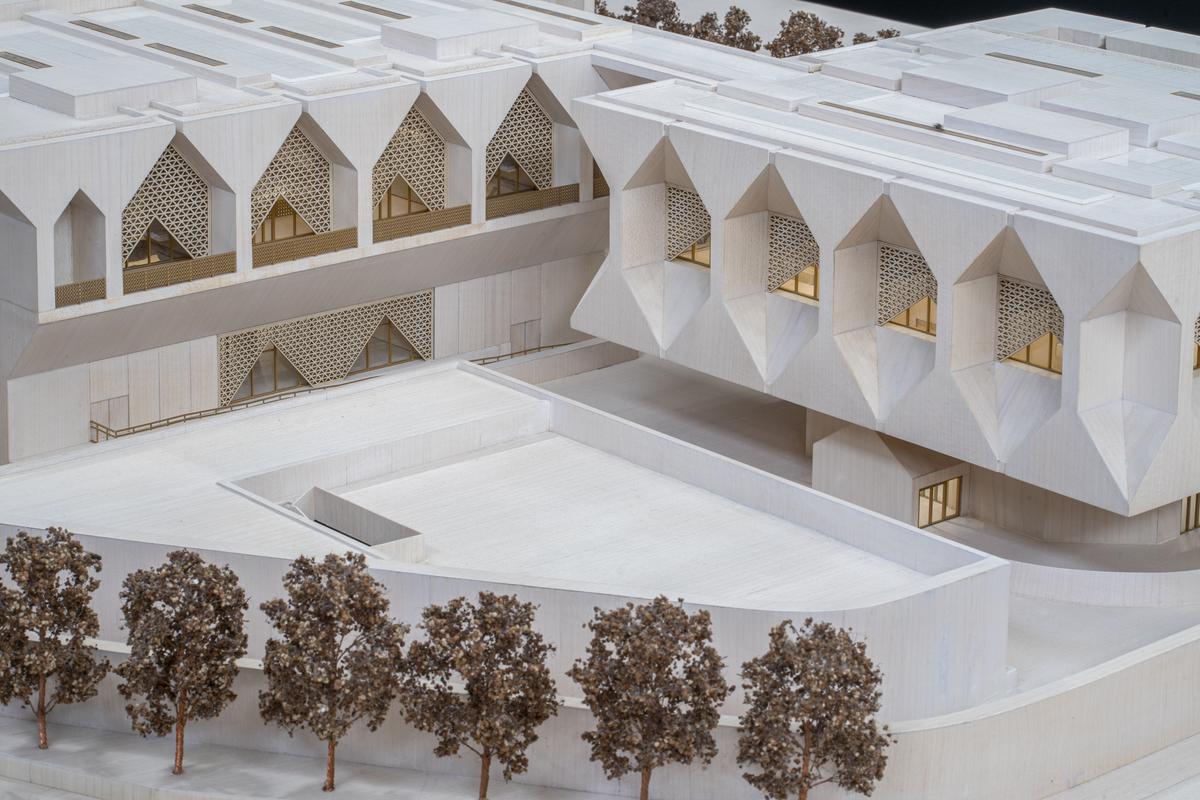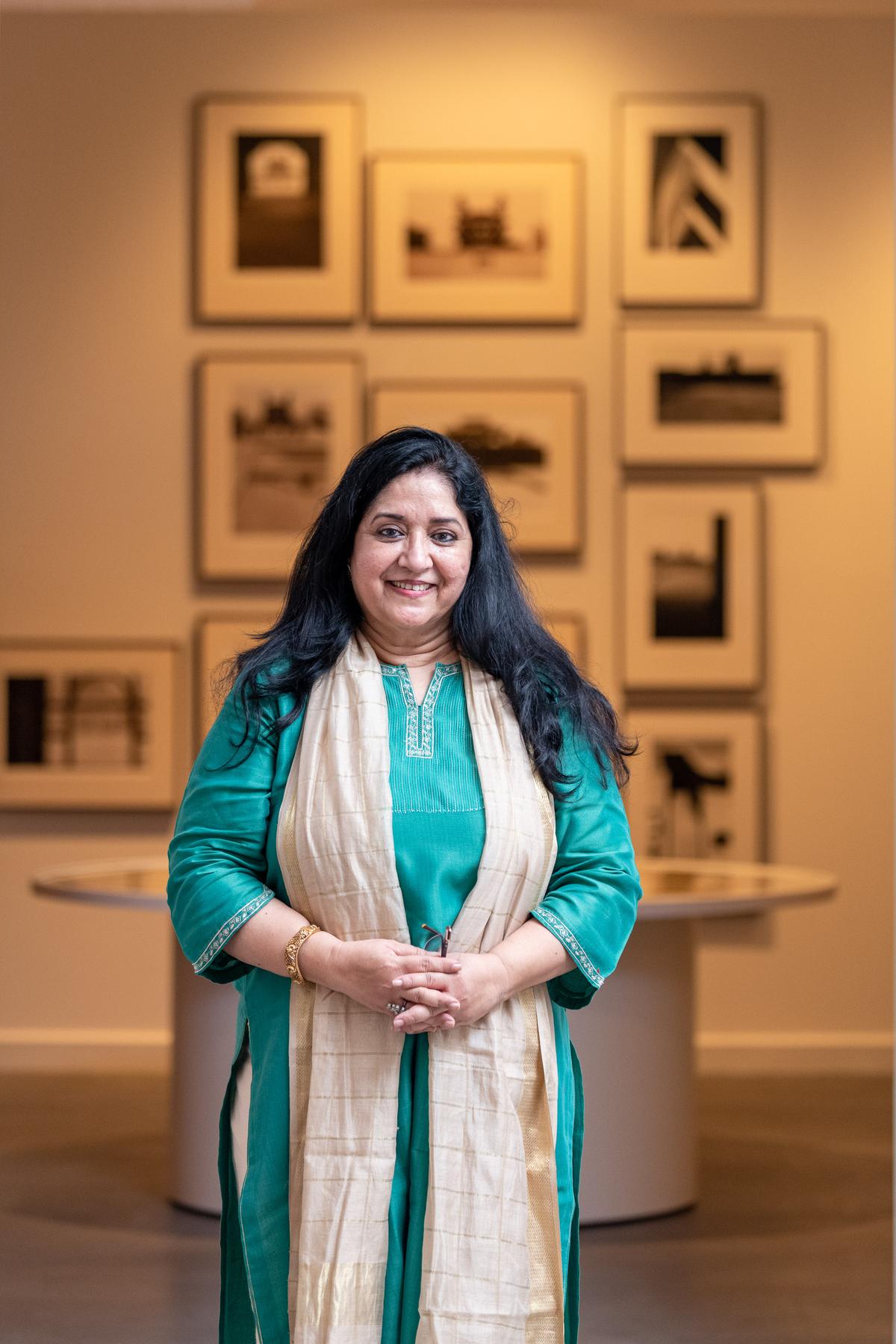Weeks before she set a new record for Indian art by buying a lost M.F. Husain painting called Gram Yatra in a Christie’s sale for ₹119 crore, Kiran Nadar was sitting in the conference room of her museum’s Saket outpost, musing about how her art collecting style had grown. “When I’m collecting an artist, I try to make it in-depth,” she said with a smile. “Be it Husain or Souza or Raza, if I had 10 works then, I have 50-100 works now.”
It was the opening day of the major retrospective on the poet-painter-critic Ghulam Mohammad Sheikh, and the museum was abuzz with activity — getting louder as the artist himself stepped in. Of the over 100 works being shown as part of Worlds Within Worlds, several are borrowed but a significant chunk come from Nadar’s personal collection, including Sleepless City, which was the first work she acquired, and Kaavad, the most prominent of his works.
Sleepless City
| Photo Credit:
Courtesy the Kiran Nadar Museum of Art
Kaavad: Traveling Shrine: Home
| Photo Credit:
Courtesy the Kiran Nadar Museum of Art
“The way he draws intimacy in rooms, the way he brings out the colours of nature always takes me by surprise,” she had said earlier with a smile, herself resplendent in a sapphire blue suit. Now she added: “I had no art background, so this is all self-learnt. My interests have become more varied. For someone who started with 500 works and has grown that into over 15,000 in the last 10-12 years, this is a huge leap.”
It’s a busy season of big moves for the Kiran Nadar Museum of Art, now in its 15th year. Just days earlier, the second edition of their Legacy series — a series dedicated to honouring enduring Indian families in the performing arts — took off at the Triveni Kala Sangam in Delhi with acclaimed sarangi maestro Murad Ali Khan from the Moradabad Gharana in concert and conversation with author-composer Anish Pradhan.

Murad Ali Khan
| Photo Credit:
Courtesy the Kiran Nadar Museum of Art
This was preceded by the first ever KNMA Theatre Festival at Sunder Nursery, where 13 plays explored the idea of the “power of vulnerability”, including folk ritualistic performances such as Beesu Kamsale and a contemporary reimagination of The Arabian Nights.
Bhaagi hui Ladkiyan, Aagaaz Repertory, Delhi
| Photo Credit:
Courtesy the Kiran Nadar Museum of Art
And not too far away now is the launch of the piece de resistance in KNMA’s long storied journey — the new museum designed by Ghanaian-British architect Sir David Adjaye — finally a physical home to call their own.

Model of the new KNMA museum
| Photo Credit:
Rakesh Anand
Fluidity and social capital
“We started in Noida in 2010, with a show called Open Doors,” recalled Nadar. “My collection wasn’t especially huge but I knew I wanted to open a museum. We quickly realised that Noida was the wrong place for footfalls. In 2011, we opened KNMA in Saket in a mall, because we thought we’d get the footfalls that came to the mall, but unfortunately this mall never got populated the way it was expected. We had to work to build that up.”
A fledgling team including Nadar, museum curator Roobina Karode and a few others did this through a rigorous educational programme featuring walks, talks and interactive workshops to create an appreciation and love for art, in its consumption and creation. Even as they courted school administrators (who initially were not interested and are now on a three-month waiting list), they were putting up major solo shows and retrospectives on key but under represented Indian and South Asian artists, often also showing them at prestigious international galleries and museums — Nasreen Mohamedi at the Met Breuer New York, Jayashree Chakravarty at Musee Guimet Paris, and Bhupen Khakhar at Tate Modern London.

Roobina Karode
| Photo Credit:
Courtesy the Kiran Nadar Museum of Art
The social capital that KNMA has gathered in these 15 years is despite, or perhaps because of, the absence of a building — and thus the absence of a definition or mould in which to function. “We wanted to build the collection, build the team, build the audience, all at the same time,” Karode said. “We looked at themes, time, groups, movements. We looked at art history as it unfolded in this country and beyond. We were interested in our neighbours, the shared histories with Pakistan, Bangladesh, Sri Lanka. So I think that became extremely important to understanding this vision and defining it.”
Competing with malls, embracing tech
India’s art landscape is flourishing, no doubt, with a bevy of new fairs and biennales, galleries and artists working with diverse media, and art acquisition being seen as a top passion asset. And while a museum’s goal is not the same as any of these, there are frequent worrying reports that show that footfall in museums the world over is declining, leading to them shutting down.
“There’s so much that is vying for people’s attention,” said Aditi Jaitly, senior curator of performing arts. “We compete with malls, with the phones in people’s hands. That’s the reality of the world; that’s the challenge set to us. And this idea of museums as dusty places with long corridors and dimly lit works where you’re supposed to read some long wall of text and be ‘educated’ — it doesn’t have to be like that.” How, then, can a 21st century museum stay relevant and be the fulcrum of culture that it wants to be?

Aditi Jaitly
| Photo Credit:
Innee Singh and Team
Embracing technology is one answer, according to Jaitly, who was particularly taken with an installation of oil pipes at the National Museum of Qatar at Doha on a recent visit. “If I have a performance going on, I can project something on a screen, which is about an instrument, with an incredible story of how it’s made or how somebody learns to play it, and somebody can touch a screen and look at that. or use a QR code, or pick up headphones and hear two minutes of the artist talking about the challenges of that particular production or piece of music.”
Karode also finds the rise of theme-based museums — from a partition museum to a museum dedicated to automobiles — very interesting. “Art and creativity is very elastic,” she said, when asked about delving into emerging genres of Indian art such as digital, immersive and I-pop. “There is a need for divergence and sometimes, there’s also a need to be deviant.”
All the same, the core function of a museum, and the role of curator, does stay the same. “I felt that there is a huge backlog in our own country where we have not given enough recognition to our artists,” she added. “We have to write our history. We have to write about our artists’ journeys. We have to bring that into the consciousness of people, of the public, and we have to work harder and harder on this because this is a terrain that has not been explored so well.”
In this background, the new KNMA will emerge, with galleries for the permanent collection, and a cultural centre featuring two auditoriums, one large, one black box-like. “Our miniature collection has more than 1,000 works now, and we’ll have two shows of miniatures at the opening,” said Nadar. “But really, the task at hand is too large and more private enterprise is required. What Sunil Kant Munjal has started with Serendipity in Goa is enormous and we are looking forward to the Brij. What they are doing is a little different. They don’t have a very large art collection but he is a very devoted person. I think we will be an example; we will answer a lot of people on what Indian art is.”
The writer is an independent journalist based in Mumbai, writing on culture, lifestyle and technology.
Published – April 04, 2025 11:00 am IST